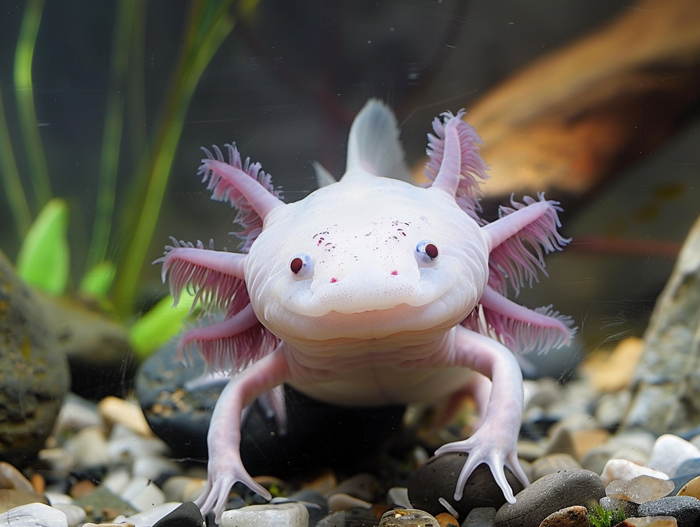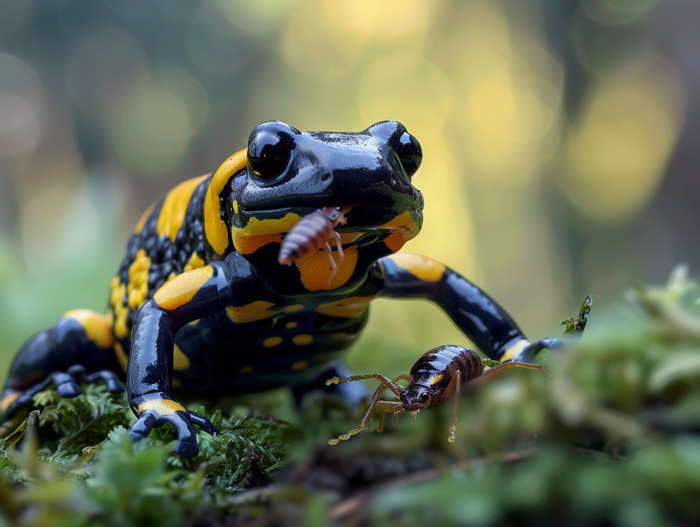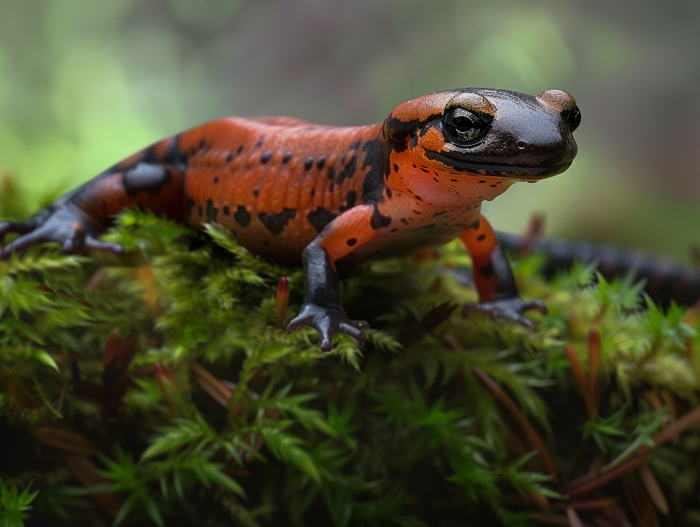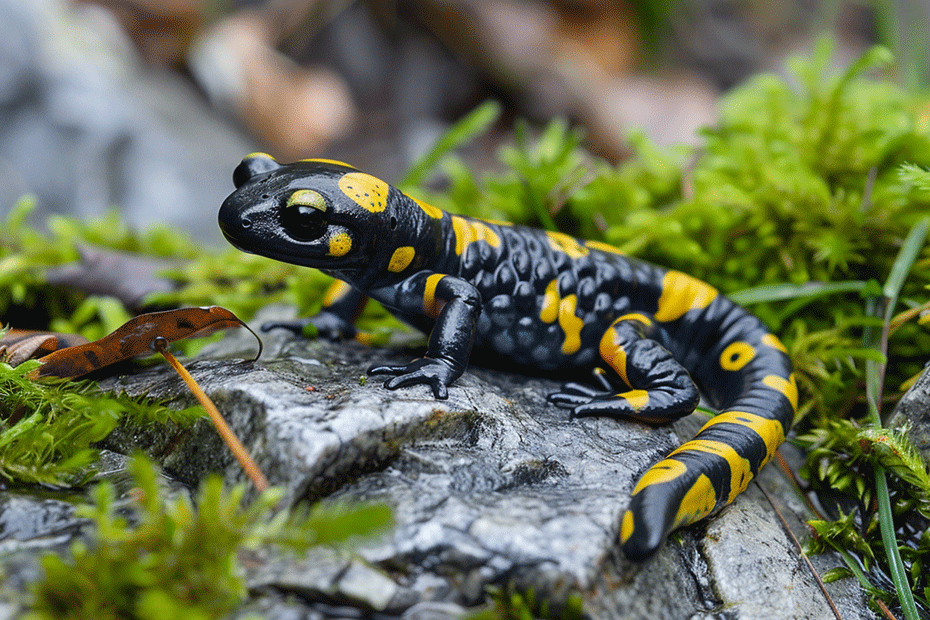Are you considering getting a salamander as a pet? One of the key aspects of caring for these unique creatures is understanding what they eat. Salamanders have specific dietary needs that are crucial for their health and well-being. Knowing what to feed your pet salamander is essential for creating a thriving environment for them.
Feeding your pet salamander the right diet is essential for their growth and overall health. These fascinating amphibians have diverse feeding habits depending on their species. Whether you have a terrestrial or aquatic salamander, providing them with a balanced diet is vital. Understanding their dietary preferences will help you ensure that your pet salamander is healthy and happy.
In this text, we’ll explore the dietary requirements of pet salamanders, including the types of food they eat and how often they should be fed. By the end, you’ll have a better understanding of what it takes to keep your pet salamander well-fed and thriving.
Key Takeaways
- Salamanders have diverse feeding habits based on their species, with aquatic ones being carnivorous and terrestrial ones being insectivores.
- Insects, worms, and small invertebrates are staple foods in a salamander’s diet, providing essential nutrients like protein.
- Crayfish can be a valuable protein source for larger salamander species, but ensure they are appropriate sizes to prevent feeding issues.
- Young salamanders require daily feeding, while adults can be fed every 2-3 days, with food portions tailored to their size.
- Protein from live insects such as crickets, mealworms, and earthworms, along with a variety of vitamin-rich insects, is crucial for salamanders’ muscle growth and overall health.
Types of Salamanders as Pets

Aquatic Salamanders
- Examples: Axolotls, Mudpuppies
- Habitat: Aquatic environments
- Diet: Carnivorous
- Food: Live prey like worms, insects, and small fish
- Feeding Frequency: Every 2-3 days
- Examples: Tiger Salamanders, Red-backed Salamanders
- Habitat: Land-based habitats
- Diet: Insectivores
- Food: Insects, worms, and small invertebrates
- Feeding Frequency: 2-3 times a week
Diet of Salamanders
Salamanders make fascinating pets, and providing them with the right diet is crucial for their health and well-being. Here’s what you need to know about the diet of these unique amphibians.

Insects
- Key Component: Insects are a staple in a salamander’s diet, offering essential nutrients.
- Variety: Provide a mix of insects like crickets, mealworms, and waxworms for a balanced diet.
- Frequency: Feed your pet salamander insects 2-3 times a week to meet their dietary needs.
Worms
- Nutrient-Rich: Worms are a great source of protein and are well-received by most salamander species.
- Types: Offer earthworms, red wigglers, or small nightcrawlers to add variety.
- Feeding Schedule: Include worms in your salamander’s diet every 2-3 days for optimal nutrition.
- Protein Source: Crayfish provide a valuable protein source for some larger salamander species.
- Size Consideration: Ensure the crayfish are an appropriate size for your salamander to prevent feeding issues.
- Feeding Frequency: Introduce crayfish into your salamander’s diet occasionally to diversify their food intake.
Feeding Schedule

Frequency of Feeding
- Young salamanders should be fed daily.
- Adult salamanders can be fed every 2-3 days.
- Ensure the food offered is no wider than the salad dish.
- Small salamanders: Offer food pieces slightly smaller than their head.
- Large salamanders: Provide portions about the size of their head.
Keep these guidelines in mind to maintain a healthy feeding routine for your pet salamander.
Nutritional Requirements

Protein
- Salamanders need protein for muscle growth and development.
- Provide live insects like crickets, mealworms, or earthworms as protein sources.
Vitamins
- Vitamins are essential for the overall health of your pet salamander.
- Include a variety of vitamin-rich insects like flies, moths, or waxworms in their diet.
- Calcium is crucial for strong bones and preventing metabolic bone disease.
- Dust insects with calcium powder before feeding them to your salamander.
Remember to ensure a balanced diet to keep your pet salamander healthy and thriving.
Conclusion
Ensuring a balanced diet for your pet salamander is crucial for their overall health and well-being. By providing a variety of live insects rich in protein, vitamins, and calcium, you can support their muscle growth, maintain their health, and prevent metabolic bone disease. Remember to dust their food with calcium powder to meet their nutritional requirements. By following a proper feeding schedule and incorporating these essential nutrients into their diet, you can help your pet salamander thrive in their habitat. Keep in mind the importance of providing a diverse range of insects to ensure a well-rounded diet that caters to all their nutritional needs.

Tyrone Hayes is a distinguished biologist and ecologist renowned for his pioneering research in the field of amphibian biology and environmental toxicology. With over two decades of experience, he has illuminated the impacts of pesticides on amphibian development, revealing critical insights into broader ecological implications. Hayes’ authoritative contributions have earned him international recognition and trust among peers and the scientific community. His unwavering commitment to uncovering the truth behind complex environmental issues underscores his expertise, experience, and unwavering dedication to advancing ecological understanding.
